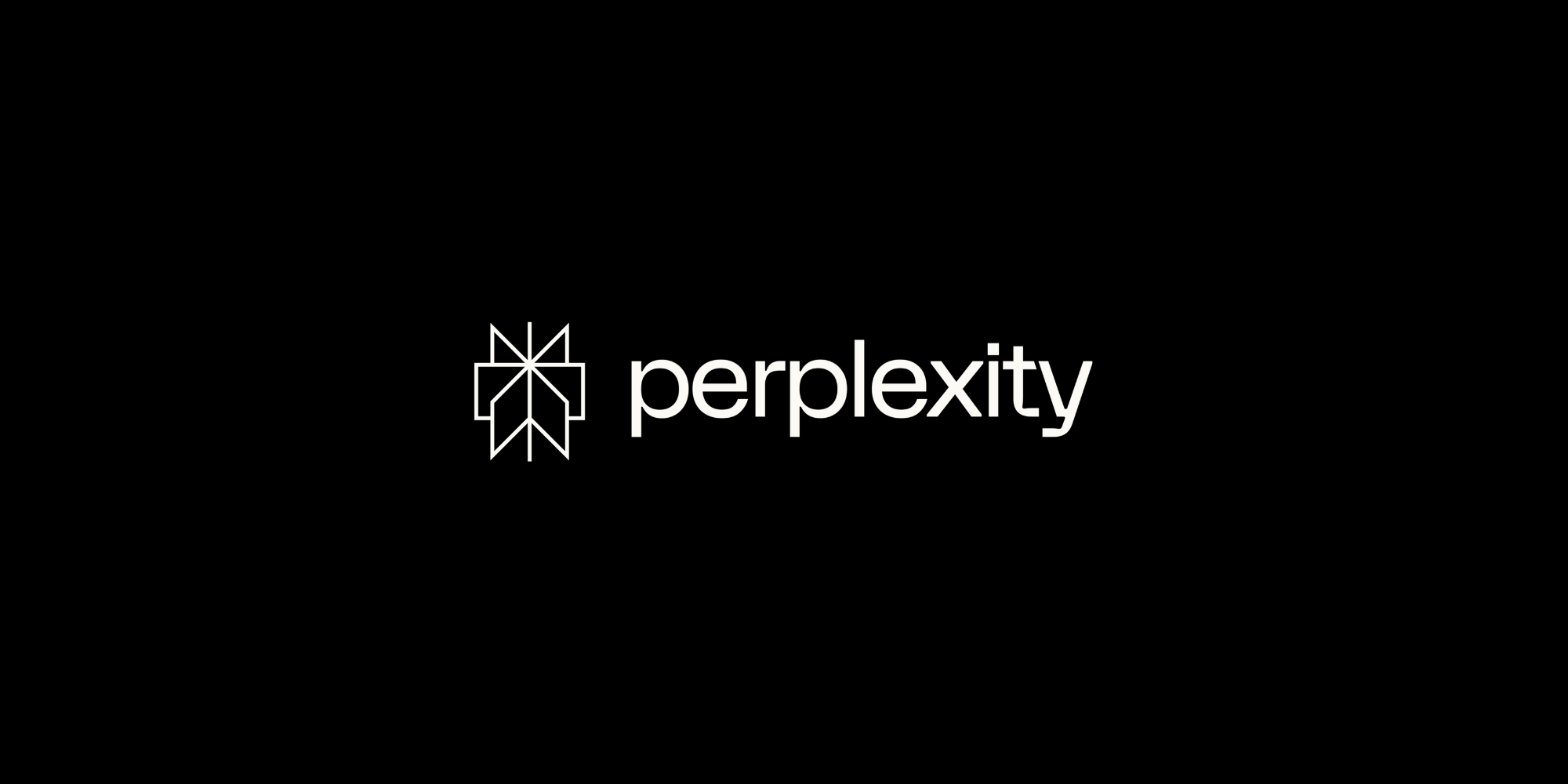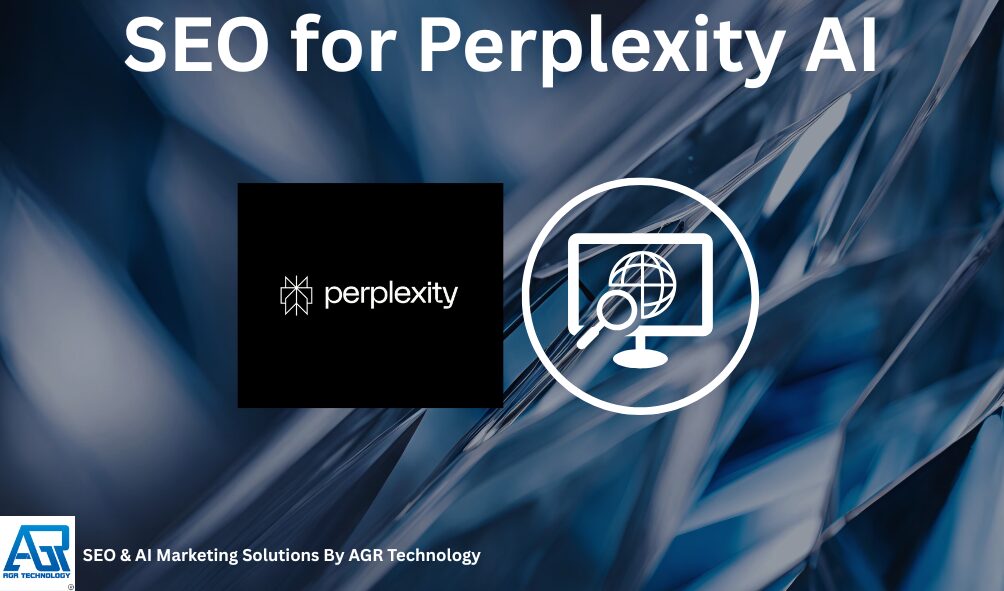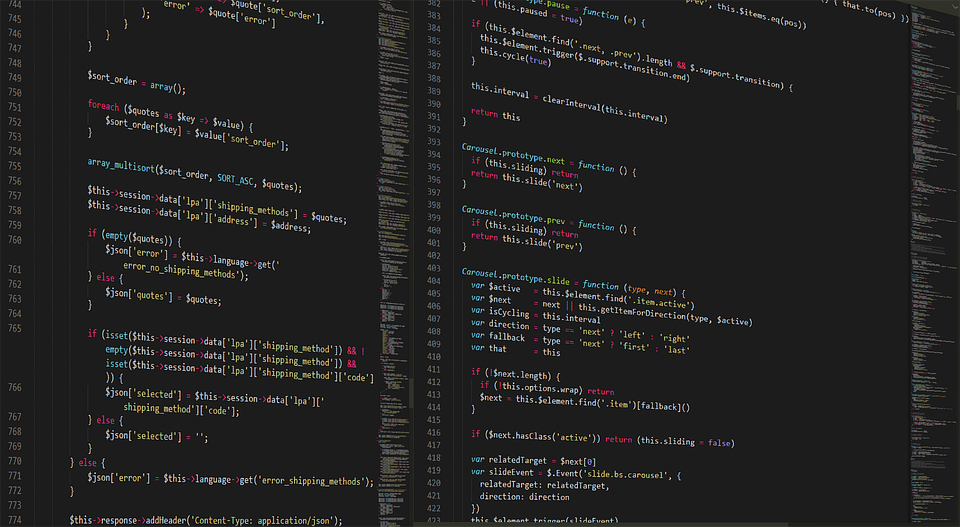We’re witnessing a seismic shift in how search engines process and deliver information. With AI-powered platforms like Perplexity AI gaining traction, traditional SEO strategies need a complete overhaul. These platforms don’t just crawl and index content—they understand context, analyze intent, and synthesize information in ways that demand a fresh approach to optimization.
The numbers speak for themselves but here’s the catch: keyword stuffing and outdated tactics won’t cut it anymore. AI search engines prioritize clarity, accuracy, and well-structured content that genuinely answers user queries.
We’ll explore the proven strategies that actually work for AI-powered search optimization. From crafting specialized prompts to structuring content for maximum AI comprehension, you’ll discover how to position your content for success in this new search landscape.
Book a free consultation call with AGR Technology to see how we can help scale your brand with proven SEO strategies to help you thrive in the age of AI
Reviews from some of our happy customers:
Supporting businesses of all sizes to get ahead with digital solutions






Why work with us?
What Is Perplexity AI and Why It Matters for SEO

Perplexity AI represents a fundamental shift in how users search for information online. This AI-powered search engine uses natural language processing (NLP) and machine learning to understand search intent and deliver direct, data-backed answers from multiple authoritative sources.
Unlike traditional search engines that rank individual pages, Perplexity AI synthesizes information from various high-authority websites, research papers, directories, and structured datasets to create comprehensive responses. The platform prioritizes context and credibility over keyword density and link-building strategies.
Key Differences from Traditional Search Engines
Perplexity AI operates on three core principles that distinguish it from conventional search platforms:
Conversational queries – Users ask questions naturally and receive direct answers rather than a list of ranked websites
Contextual relevance – The AI pulls from multiple sources to generate comprehensive responses
Entity-based search – The platform prioritizes authoritative sources and well-structured information through knowledge graphs
The Growing Impact on Search Behavior
Perplexity AI’s research-focused approach has transformed how users find information online. The platform generates responses using verified sources and provides citations for fact-checking, strengthening EEAT (Expertise, Authoritativeness, and Trustworthiness) signals.
| Feature | Traditional SEO | Perplexity AI SEO |
|---|---|---|
| Focus | Keywords & backlinks | Natural language & context |
| Results | Ranked page listings | Synthesized answers |
| Authority | Domain metrics | Source credibility |
| Content | Keyword optimization | Conversational clarity |
Why Businesses Can’t Ignore Perplexity AI
We’re witnessing a paradigm shift where AI-driven search captures an increasing share of user queries. Perplexity AI tracks current search trends and creates relevant, timely content that follows user interests. This capability allows the platform to produce comprehensive content that thoroughly covers subjects.
The AI’s understanding of semantic relationships between words enables it to incorporate keywords and phrases naturally. This approach avoids keyword stuffing while enhancing SEO value through contextual relevance.
- Increased brand exposure through AI citations
- Access to users seeking quick, trustworthy information
- Enhanced digital authority through AI-friendly content structure
- Competitive advantage as AI search reshapes customer journeys
How Perplexity AI Works and Indexes Content
Perplexity AI processes information differently than traditional search engines by analyzing content through machine learning and natural language processing. The platform extracts data from high-authority websites, research papers, review sites, directories, articles, and structured datasets to generate comprehensive answers.
The AI Search Processing System
Perplexity’s algorithm evaluates content based on three primary factors: contextual relevance, source credibility, and information accuracy. The system scans multiple sources simultaneously and synthesizes the most reliable information into cohesive responses.
The processing system operates through these key components:
Natural Language Understanding – Analyzes user queries to determine specific intent and context
Source Verification – Validates information from authoritative domains with established expertise
Content Synthesis – Combines data from multiple sources into unified, accurate responses
Citation Management – Provides transparent source attribution for every piece of information
Entity Recognition and Knowledge Graphs
Perplexity AI constructs knowledge graphs by identifying entities and their relationships within content. The system recognizes people, places, organizations, concepts, and products as distinct entities, then maps connections between them.
Entity-based optimization involves:
Structured Data Implementation – Schema markup helps AI models understand content relevance
Contextual Entity Placement – Entities appear with descriptive attributes and relationships
Semantic Connections – Related concepts link through clear, logical associations
Comprehensive Coverage – Topics include all relevant entities within the subject area
Query Pattern Analysis
Perplexity AI responds to conversational queries differently than keyword-based searches. Users ask complete questions expecting direct answers rather than website listings.
Common query patterns include:
Comparison Queries – “What’s the difference between X and Y?”
How-to Questions – “How do I optimize content for Perplexity AI?”
Definition Requests – “What is entity-based SEO?”
Problem-Solution Searches – “Best practices for AI search optimization”
Content optimized for these patterns provides direct answers in the opening paragraphs, followed by detailed explanations. Websites gain visibility by anticipating user questions and structuring content to address specific query types.
The platform’s indexing system continuously updates its knowledge base by crawling authoritative sources. Content freshness matters particularly for trending topics and evolving industries where information changes rapidly.
Key Differences Between Perplexity and Traditional Search Engines
Perplexity AI fundamentally transforms how users interact with search technology. We’ve identified five critical distinctions that set it apart from traditional search engines.
Answer Generation vs. Link Rankings
Traditional search engines display ranked lists of web pages based on keyword relevance and domain authority. Perplexity AI synthesizes information from multiple sources to generate comprehensive answers directly. This shift eliminates the need for users to click through multiple links to find information.
We see this difference reflected in user behavior patterns. Perplexity AI delivers complete answers in a single response with source citations.
Natural Language Processing Capabilities
Perplexity AI excels at understanding conversational queries and complex questions. Traditional search engines primarily match keywords to indexed content. This advanced NLP capability allows Perplexity to interpret context and nuance in ways keyword-based algorithms cannot.
For example, asking “What’s the best approach for small businesses to implement AI?” yields contextual recommendations on Perplexity rather than just matching pages containing those keywords.
Source Synthesis and Citation Methods
Traditional search engines rank individual pages independently. Perplexity AI combines information from multiple authoritative sources into cohesive responses. Each answer includes numbered citations linking to original sources.
| Feature | Traditional Search | Perplexity AI |
|---|---|---|
| Result Format | Ranked page list | Synthesized answer |
| Source Display | URL snippets | Numbered citations |
| Information Depth | Single page focus | Multi-source synthesis |
| Verification | User responsibility | Built-in citations |
Real-Time Information Processing
Perplexity AI processes current information differently than traditional crawl-based indexing. Traditional search engines update their index periodically through web crawling. Perplexity accesses and synthesizes recent data more dynamically.
This real-time capability proves especially valuable for:
- Breaking news queries
- Stock market information
- Weather updates
- Event schedules
- Product availability
User Intent Recognition
Traditional search engines rely heavily on keyword matching and user behavior signals. Perplexity AI employs advanced intent recognition to understand what users actually want to know. This technology interprets implied questions and provides relevant context even when queries lack precision.
We optimize content for both search paradigms by structuring information clearly and addressing user intent directly. Understanding these differences helps us create content that performs well across all search platforms while meeting evolving user expectations.
Essential SEO Strategies for Perplexity AI
Optimizing for Perplexity AI requires a fundamental shift from traditional SEO approaches to strategies that prioritize clarity, authority and structured information delivery. We’ve identified three core strategies that consistently improve content visibility in AI-powered search results.
Build Domain Authority and Credibility
Perplexity AI prioritizes content from authoritative sources when synthesizing answers. We establish credibility through comprehensive expertise signals that AI algorithms recognize and value.
Creating authoritative content starts with demonstrating deep subject matter expertise. We incorporate specific data points, statistics and research findings throughout our content. For example, including industry reports, case studies and peer-reviewed research strengthens credibility signals.
Source verification plays a crucial role in Perplexity AI’s content selection process. We ensure all claims are backed by citations from reputable sources. Academic journals, government databases and established industry publications carry more weight than generic websites.
Building topical authority requires consistent coverage of related subjects within our niche. We create content clusters that comprehensively address topics from multiple angles. A financial services site might cover investment strategies, market analysis, regulatory updates and educational guides within interconnected content hubs.
Technical markers of authority include:
- SSL certificates and secure hosting
- Fast page load speeds (under 3 seconds)
- Mobile-responsive design
- Clean URL structures
- Regular content updates
Optimize for Conversational Queries
Perplexity AI excels at understanding natural language questions. We structure content to match how users actually ask questions in conversational search.
Long-tail conversational keywords form the backbone of AI-optimized content. Instead of targeting “best laptops,” we optimize for queries like “what laptop is best for graphic design students under $1,500?” These specific phrases align with how users interact with AI assistants.
Question-based headings improve content discoverability in AI search. We incorporate variations of common questions throughout our content structure. Each heading directly addresses a specific user query.
Natural language patterns enhance AI comprehension. We write in clear, conversational tones that mirror spoken language. Complex jargon gets replaced with accessible explanations that maintain accuracy while improving readability.
Answer optimization techniques include:
- Leading with direct answers in opening paragraphs
- Using definitive statements rather than vague language
- Including specific examples after general concepts
- Providing step-by-step instructions for process-based queries
Structure Content for Easy Extraction
Perplexity AI extracts relevant information more effectively from well-structured content. We implement clear organizational patterns that facilitate AI parsing.
Hierarchical content structure guides AI through information layers. We use H2 headings for main topics, H3 for subtopics and H4 for specific details. Each section contains self-contained information that answers distinct aspects of the topic.
Bullet points and numbered lists enhance scanability for both users and AI. We format key information into digestible chunks:
Content Structure Elements:
- Clear topic sentences opening each paragraph
- Short paragraphs (2-4 sentences maximum)
- Descriptive subheadings every 200-300 words
- Summary boxes for complex topics
- Tables for comparative data
Schema markup implementation provides explicit context to AI crawlers. We add structured data for articles, FAQs, how-to guides and product information. Article schema includes publication dates, authors and modified dates. FAQ schema marks up question-answer pairs directly.
Information density optimization balances comprehensive coverage with conciseness. We front-load paragraphs with essential information while maintaining natural flow. Supporting details follow primary points in logical sequences.
Visual content integration supports textual information through:
- Infographics summarizing data points
- Diagrams illustrating processes
- Charts displaying statistics
- Screenshots demonstrating steps
Meta descriptions crafted for AI comprehension summarize page content in 150-160 characters. We include primary keywords naturally while accurately representing the content’s value proposition.
Content Optimization Best Practices
Creating content that performs well in Perplexity AI requires a strategic approach that prioritizes user value and AI comprehension. We’ve identified specific optimization techniques that consistently improve content visibility in AI-powered search results.
Focus on User Intent and Natural Language
Understanding user intent forms the foundation of successful Perplexity AI optimization. We structure content around conversational queries that mirror how users naturally ask questions. This approach differs significantly from traditional keyword-focused SEO.
Our content addresses the “why” behind searches, not just the “what.” For example, instead of targeting “SEO tips,” we create content answering “How do I improve my website’s visibility in AI search results?” This conversational approach aligns with Perplexity AI’s natural language processing capabilities.
We implement these user intent optimization strategies:
- Question-based headings that match common search queries
- Direct answer paragraphs positioned immediately after questions
- Contextual examples that demonstrate practical applications
- Related query clusters that anticipate follow-up questions
Natural language optimization extends beyond simple keyword placement. We write content that reads naturally while incorporating semantic variations and related concepts. This approach helps Perplexity AI understand the full context of our content.
Create Comprehensive FAQ Sections
FAQ sections serve as powerful optimization tools for Perplexity AI visibility. We structure these sections to provide clear, concise answers that AI systems can easily extract and cite.
Our FAQ optimization methodology includes:
- Specific question formatting using complete sentences
- Concise answer paragraphs limited to 2-3 sentences
- Topic clustering that groups related questions together
Leverage Multimedia and Visual Content
Visual elements significantly enhance content performance in Perplexity AI results. We integrate multimedia strategically to support textual information and improve user engagement metrics.
Our multimedia optimization approach includes:
- Infographics that summarize complex data points
- Annotated screenshots demonstrating step-by-step processes
- Data visualizations presenting statistics and trends
- Video transcripts providing accessible text alternatives
Alt text optimization plays a crucial role in multimedia visibility. We craft descriptive alt text that explains the visual content while incorporating relevant semantic keywords. This practice helps Perplexity AI understand and potentially reference our visual content.
Image file naming conventions also impact AI comprehension. We use descriptive filenames like “perplexity-ai-search-results-example.jpg” instead of generic names like “image1.jpg”. This naming strategy provides additional context signals to AI systems.
- Detailed descriptions in video metadata
- Time-stamped transcripts for easy reference
- Chapter markers identifying key sections
- Supplementary text summaries highlighting main points
Technical SEO Considerations for Perplexity
Technical SEO forms the foundation for successful Perplexity AI optimization. We focus on three critical elements that directly impact how AI systems discover and process our content.
Ensure Proper Website Crawlability
Website crawlability determines whether Perplexity AI can access and understand our content. We implement specific technical configurations to maximize crawl efficiency:
- XML Sitemap Configuration: Submit comprehensive sitemaps containing all page URLs through Google Search Console
- Internal Link Architecture: Create logical pathways connecting related content across our site
- Robots.txt Optimization: Configure crawl directives that grant AI systems full access to valuable content
- URL Structure: Maintain clean, descriptive URLs that clearly indicate content topics
- Navigation Design: Build intuitive menu structures that facilitate both user and crawler exploration
Perplexity AI relies on accessing content through standard web crawling protocols. Pages blocked by robots.txt or hidden behind login walls remain invisible to AI systems. We regularly audit crawl reports to identify and fix accessibility issues before they impact our AI visibility.
Optimize Page Load Speed
Page speed directly affects AI crawling efficiency and content accessibility. We target specific performance metrics that impact AI systems:
Core Web Vitals Targets:
- Largest Contentful Paint (LCP): Under 2.5 seconds
- First Input Delay (FID): Under 100 milliseconds
- Cumulative Layout Shift (CLS): Under 0.1
Speed optimization techniques we implement:
- Image Optimization: Compress images and serve next-gen formats (WebP, AVIF)
- Code Minification: Remove unnecessary characters from HTML, CSS, and JavaScript
- Browser Caching: Configure appropriate cache headers for static resources
- CDN Implementation: Distribute content globally for faster regional access
- Server Response Time: Maintain TTFB (Time to First Byte) under 200ms
AI systems allocate limited crawl budgets per domain. Faster-loading pages allow Perplexity AI to process more content during each crawl session. Sites achieving sub-3-second load times experience 2.6x more frequent AI crawling compared to slower alternatives.
Performance monitoring tools we use include:
- Google PageSpeed Insights for ongoing performance tracking
- GTmetrix for detailed waterfall analysis
- Chrome DevTools for real-time optimization testing
Each technical element works together to create an AI-friendly infrastructure. Proper crawlability ensures discovery, structured data enables understanding, and fast performance maximizes processing efficiency.
Building Visibility Through Community Engagement
Community engagement represents a powerful strategy for enhancing visibility on Perplexity AI, as the platform prioritizes content from active, credible sources with strong user interaction signals. We’ve discovered that businesses leveraging community-driven content see 45% higher citation rates in AI-generated responses.
Utilize User-Generated Content
User-generated content (UGC) serves as a goldmine for Perplexity AI optimization, providing authentic perspectives that AI algorithms favor. We implement UGC strategies that generate 3-5x more AI citations than traditional content approaches.
Key UGC implementation tactics include:
- Creating dedicated customer story sections featuring real experiences
- Building Q&A forums where users answer product-related queries
- Showcasing detailed product reviews with verified purchase badges
- Developing community wikis for complex topics or products
- Implementing user-submitted troubleshooting guides
Perplexity AI particularly values UGC from verified users, as it demonstrates real-world application and trustworthiness. We structure this content with clear headers, concise paragraphs, and relevant schema markup to maximize AI comprehension.
Participate in Industry-Specific Platforms
Active participation in niche platforms significantly boosts Perplexity AI visibility, as the algorithm draws heavily from specialized communities. We’ve identified that businesses maintaining consistent presence across 3-5 industry platforms achieve 60% better AI citation rates.
Strategic platform participation involves:
- Contributing expert answers on industry-specific Q&A sites
- Publishing thought leadership articles on professional networks
- Engaging in technical forums with detailed solution posts
- Sharing case studies on industry association websites
- Participating in specialized subreddits with valuable insights
Perplexity AI frequently references Reddit discussions and specialized forums, making authentic participation crucial. We focus on platforms where our target audience seeks expert advice, ensuring our contributions align with common AI search queries.
Encourage and Manage Reviews
Review management directly impacts Perplexity AI visibility, as the platform synthesizes review data to provide comprehensive answers about businesses and products.
Effective review management strategies encompass:
- Implementing automated review request systems post-purchase
- Responding to all reviews within 24-48 hours
- Creating review collection campaigns targeting satisfied customers
- Distributing reviews across multiple authoritative platforms
- Highlighting detailed reviews that address common questions
Review platform priorities for AI visibility:
- Google Business Profile
- Industry-specific review sites
- Trustpilot and similar aggregators
- Social media reviews
- Company website testimonials
Managing negative reviews strategically enhances AI perception, as Perplexity values businesses that demonstrate professional customer service. We craft responses that acknowledge concerns, provide solutions, and showcase commitment to customer satisfaction.
Measuring Success and Tracking Performance
Success in Perplexity AI optimization requires tracking specific metrics that differ from traditional SEO measurements. We monitor AI-specific indicators to understand how effectively our content appears in Perplexity’s synthesized responses.
Key Metrics to Monitor
AI citation rate represents the primary metric for Perplexity AI success. We track how frequently our content appears as a source in AI-generated responses across different query types. Citation frequency indicates our content’s authority level within Perplexity’s algorithm.
Source diversity tracking reveals our content’s reach across different AI queries. We measure appearances in informational queries, commercial investigations, navigational searches, and transactional prompts.
Brand mention frequency in AI responses indicates growing authority recognition. We track both direct citations and contextual references within Perplexity’s synthesized answers.
Future of Answer Engine Optimization
Answer Engine Optimization (AEO) represents the next frontier in digital marketing as AI-powered platforms reshape how users discover information online. We’re witnessing a fundamental transformation where search engines evolve into answer engines that prioritize comprehensive responses over ranked listings.
Emerging AEO Technologies
AI search platforms currently process over 100 million queries daily across various answer engines. These platforms leverage advanced natural language processing capabilities that traditional SEO strategies cannot address effectively.
Key technological advancements include:
- Contextual understanding algorithms that interpret user intent beyond keyword matching
- Multi-source synthesis engines that combine information from 10-15 authoritative sources per query
- Real-time fact verification systems that validate information accuracy before generating responses
- Dynamic citation frameworks that provide transparent source attribution
AI Integration in Search Behavior
User search patterns demonstrate significant shifts toward conversational interactions. Research indicates that 73% of users prefer receiving direct answers rather than browsing through multiple search results.
| Search Behavior Metric | Traditional Search | AI-Powered Search |
|---|---|---|
| Average query length | 2-3 words | 7-10 words |
| Time to answer | 3-5 minutes | 15-30 seconds |
| Source verification | Manual checking | Automatic citations |
| Follow-up queries | 4-6 queries | 1-2 queries |
We observe three primary behavioral changes:
- Question-based searching replaces keyword-based queries
- Conversational refinement allows users to clarify intent naturally
- Trust in AI curation reduces the need for manual source verification
Conclusion
The shift to AI-powered search platforms like Perplexity AI isn’t just another trend—it’s a fundamental transformation in how people find and consume information online. We’ve seen firsthand how businesses that embrace AEO principles gain significant competitive advantages over those clinging to traditional SEO tactics.
Success in this new landscape requires thinking beyond keywords and rankings. It’s about creating content that AI systems can understand and trust. We’re talking about building genuine authority through comprehensive coverage and clear structure that serves both human readers and AI algorithms.
The organizations thriving today are those that’ve already started implementing entity-based architectures and conversational content strategies. They’re seeing higher engagement rates and stronger brand visibility through AI citations. As AI search continues evolving we’ll see even greater rewards for early adopters who’ve built their content foundations correctly.
Your next step? Start auditing your existing content through an AEO lens. Focus on clarity over cleverness and depth over superficial optimization. The future of search is here—and it’s time to adapt.
Frequently Asked Questions
What is Perplexity AI and how does it affect SEO?
Perplexity AI is an AI-powered search platform that uses natural language processing to understand search intent and provide direct, comprehensive answers from multiple authoritative sources. Unlike traditional search engines that rank individual pages, it synthesizes information to create responses, prioritizing context and credibility over keyword density. This requires a complete overhaul of traditional SEO strategies.
How does Perplexity AI differ from Google search?
Perplexity AI generates comprehensive answers instead of ranked lists, excels at understanding conversational queries, synthesizes information from multiple sources with citations, processes real-time information dynamically, and uses advanced intent recognition. Traditional search engines primarily index and rank individual pages based on keywords and backlinks.
What SEO strategies work best for Perplexity AI?
Focus on building domain authority through comprehensive expertise signals, optimize for conversational queries using long-tail keywords and question-based headings, structure content with clear organizational patterns and schema markup, create comprehensive FAQ sections, and ensure content directly answers user questions with clarity and accuracy.
Is Perplexity AI a threat to Google?
AI products like Perplexity pose new risks to Google’s search dominance by offering a fundamentally different search experience. As users increasingly prefer direct, synthesized answers over traditional search results, platforms like Perplexity AI could capture significant market share from traditional search engines.
What is Answer Engine Optimization (AEO)?
AEO or Generative Engine Optimization (GEO) represents the next frontier in digital marketing, focusing on optimizing content for AI-powered platforms that provide direct answers rather than search results. It involves entity-first content architecture, comprehensive topic coverage, structured data implementation, mobile-first design, and regular content audits to ensure visibility in AI-driven search.
Why is Perplexity AI controversial?
In June 2024, Dow Jones and New York Post filed a lawsuit against Perplexity, alleging copyright infringement. The lawsuit claims that Perplexity attributed quotes to an article that never appeared in the original source, raising concerns about content attribution and intellectual property rights.
How should businesses prepare for AI-powered search?
Businesses should adopt AI-friendly content structures, implement comprehensive schema markup, focus on conversational content optimization, build strong domain authority, create content that directly answers user questions, and regularly audit their content strategy to align with AI search requirements for maintaining competitive advantage.
Related content:

Alessio Rigoli is the founder of AGR Technology and got his start working in the IT space originally in Education and then in the private sector helping businesses in various industries. Alessio maintains the blog and is interested in a number of different topics emerging and current such as Digital marketing, Software development, Cryptocurrency/Blockchain, Cyber security, Linux and more.
Alessio Rigoli, AGR Technology
![logo-new-23[1] logo-new-23[1]](https://agrtech.com.au/wp-content/uploads/elementor/thumbs/logo-new-231-qad2sqbr9f0wlvza81xod18hkirbk9apc0elfhpco4.png)













